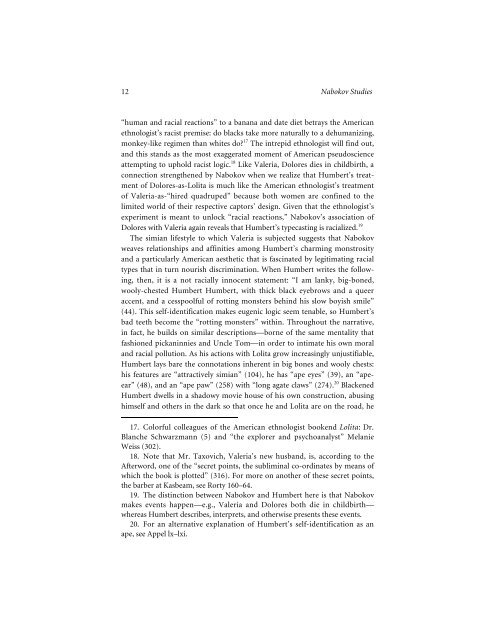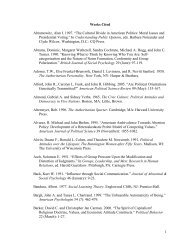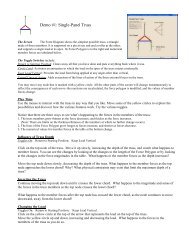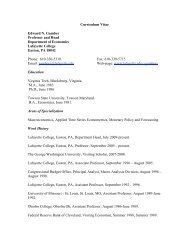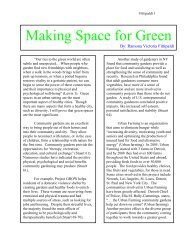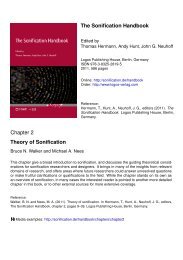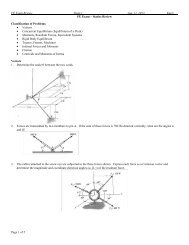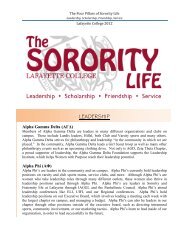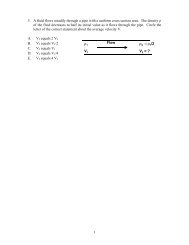Of Pickaninnies and Nymphets: Race in Lolita - Project MUSE
Of Pickaninnies and Nymphets: Race in Lolita - Project MUSE
Of Pickaninnies and Nymphets: Race in Lolita - Project MUSE
- No tags were found...
You also want an ePaper? Increase the reach of your titles
YUMPU automatically turns print PDFs into web optimized ePapers that Google loves.
12 Nabokov Studies“human <strong>and</strong> racial reactions” to a banana <strong>and</strong> date diet betrays the Americanethnologist’s racist premise: do blacks take more naturally to a dehumaniz<strong>in</strong>g,monkey-like regimen than whites do? 17 The <strong>in</strong>trepid ethnologist will f<strong>in</strong>d out,<strong>and</strong> this st<strong>and</strong>s as the most exaggerated moment of American pseudoscienceattempt<strong>in</strong>g to uphold racist logic. 18 Like Valeria, Dolores dies <strong>in</strong> childbirth, aconnection strengthened by Nabokov when we realize that Humbert’s treatmentof Dolores-as-<strong>Lolita</strong> is much like the American ethnologist’s treatmentof Valeria-as-“hired quadruped” because both women are conf<strong>in</strong>ed to thelimited world of their respective captors’ design. Given that the ethnologist’sexperiment is meant to unlock “racial reactions,” Nabokov’s association ofDolores with Valeria aga<strong>in</strong> reveals that Humbert’s typecast<strong>in</strong>g is racialized. 19The simian lifestyle to which Valeria is subjected suggests that Nabokovweaves relationships <strong>and</strong> aff<strong>in</strong>ities among Humbert’s charm<strong>in</strong>g monstrosity<strong>and</strong> a particularly American aesthetic that is fasc<strong>in</strong>ated by legitimat<strong>in</strong>g racialtypes that <strong>in</strong> turn nourish discrim<strong>in</strong>ation. When Humbert writes the follow<strong>in</strong>g,then, it is a not racially <strong>in</strong>nocent statement: “I am lanky, big-boned,wooly-chested Humbert Humbert, with thick black eyebrows <strong>and</strong> a queeraccent, <strong>and</strong> a cesspoolful of rott<strong>in</strong>g monsters beh<strong>in</strong>d his slow boyish smile”(44). This self-identification makes eugenic logic seem tenable, so Humbert’sbad teeth become the “rott<strong>in</strong>g monsters” with<strong>in</strong>. Throughout the narrative,<strong>in</strong> fact, he builds on similar descriptions—borne of the same mentality thatfashioned pickan<strong>in</strong>nies <strong>and</strong> Uncle Tom—<strong>in</strong> order to <strong>in</strong>timate his own moral<strong>and</strong> racial pollution. As his actions with <strong>Lolita</strong> grow <strong>in</strong>creas<strong>in</strong>gly unjustifiable,Humbert lays bare the connotations <strong>in</strong>herent <strong>in</strong> big bones <strong>and</strong> wooly chests:his features are “attractively simian” (104), he has “ape eyes” (39), an “apeear”(48), <strong>and</strong> an “ape paw” (258) with “long agate claws” (274). 20 BlackenedHumbert dwells <strong>in</strong> a shadowy movie house of his own construction, abus<strong>in</strong>ghimself <strong>and</strong> others <strong>in</strong> the dark so that once he <strong>and</strong> <strong>Lolita</strong> are on the road, he17. Colorful colleagues of the American ethnologist bookend <strong>Lolita</strong>: Dr.Blanche Schwarzmann (5) <strong>and</strong> “the explorer <strong>and</strong> psychoanalyst” MelanieWeiss (302).18. Note that Mr. Taxovich, Valeria’s new husb<strong>and</strong>, is, accord<strong>in</strong>g to theAfterword, one of the “secret po<strong>in</strong>ts, the sublim<strong>in</strong>al co-ord<strong>in</strong>ates by means ofwhich the book is plotted” (316). For more on another of these secret po<strong>in</strong>ts,the barber at Kasbeam, see Rorty 160–64.19. The dist<strong>in</strong>ction between Nabokov <strong>and</strong> Humbert here is that Nabokovmakes events happen—e.g., Valeria <strong>and</strong> Dolores both die <strong>in</strong> childbirth—whereas Humbert describes, <strong>in</strong>terprets, <strong>and</strong> otherwise presents these events.20. For an alternative explanation of Humbert’s self-identification as anape, see Appel lx–lxi.


